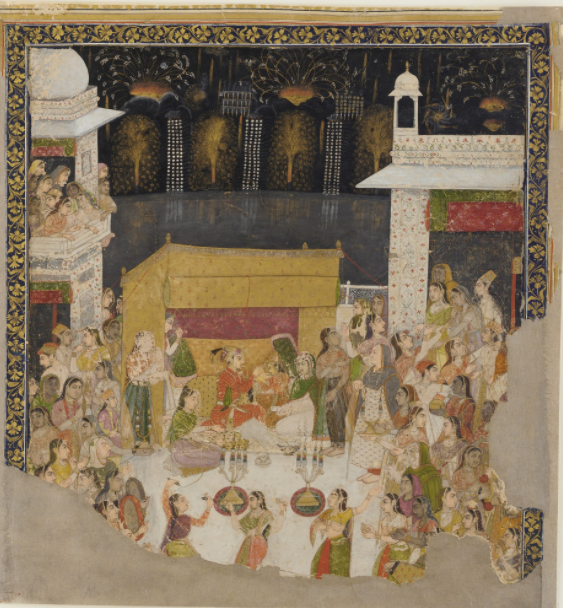Are firecrackers an integral part of the history of the Indian Subcontinent?
- Scripturient

- Nov 14, 2020
- 3 min read
The invention of firecrackers is disputed between the Ancient Indian Mauryan Empire and the Han dynasty of China. (Around the same time between 250-200BC) It can however be concluded through consensus that in terms of the usage of Firecrackers, it was first noted in the Han Dynasty. During the Han dynasty (202 BC – 220 AD), people threw bamboo stems into a fire to produce an explosion with loud sounds. Exploding bamboo stems and gunpowder firecrackers were interchangeably known as 'baozhu' or 'baogan.'
Source:- Needham, Joseph (1986) -The Gunpowder Epic.
However, historians have confirmed that the knowledge of gunpowder was existent in ancient India. In fact, "Kautilya Arthasastra" (written between 250BC to 300AD) speaks of using saltpeter and resin to create 'poisonous smoke' for warfare, battles, and mining. Gunpower has been noted to be used by Indians in warfare for hundreds of centuries. When Hercules of Egypt and Dionysus overran the Indian people with arms and attacked the tribes, they were driven off by rockets of fire and thunderbolts....
Source:- Life of Apollonius of Tyana.
In a Sanskrit text called 'Sukranti', it is mentioned as 'Agnichurna.' Chemically it is potassium nitrate, KNO3. A tribe in the Bihar and Bengal learned to select dried moss and fungus with enough protein matter for conversion into nitrates through decomposition by saturating the tinder with blood and urine, mixed with potash-rich ashes they figured out the process. This manure then produced saltpeter, a key element for gunpowder. This is estimated to be an event from the 12th century.
Chinese texts dating back to the 7th century AD had acknowledged that Indians were aware of Saltpetre and its usage for producing purple flames implying that it might be used for aesthetic purposes apart from the military!!
Source:- Military Transition in Early Modern Asia (Kaushik Roy)

Usage of Firecrackers:-
Abd-al-Razzāq Samarqandī (1413-1482) came to the court of Devaraya II, who was the emperor of the Vijayanagara Empire. He noted the usage of lavish fireworks in the courts of Vijayanagar in 1443 AD.
Courtesy of the source (image):- @OnlyDharma1

By the 16th century, fireworks had become a thing of great interest for Indian royalty. Grand fireworks during weddings, diplomatic decorums which cost a fortune had become a norm.
In 1609, Adil Shah spent a gigantiuous Rs 80,000 on fireworks alone.
Here's a depiction of fireworks celebrations in Dara Shikoh’s marriage to Nadira Banu Begum in 1633. He was the eldest son and heir-apparent of the Mughal emperor Shah Jahan. PK Gode, a historian and the first curator of the Bhandarkar Oriental Research Institute, wrote "The History of Fireworks in India" where he documents Portuguese traveler Duarte Barbosa’s account of fireworks being used to in a wedding of a Brahmin couple in Gujarat in 1518.
It is a real shame that history books in India and here in Bangladesh glorifies genocidal emperors like Aurangzeb in our national curriculum books.
Here are the first 5 educational ministers of India:-
1. Maulana Abul Kalam Azad (1947-58)
2. K. L. Shrimali (1958-63
3. Humayun Kabir(20 days)
4. M. C. Chagla (1963-66)
5. Fakhruddin Ali Ahmed (1966-67)
Result of incompetent congress regimes!
Depiction of Friday fireworks for "Night of Shab-i Barat Feast." Btw, this is an Islamic holiday celebrated on the 15th night, of the month of Sha'ban, the 8th month of the Islamic calendar. It commemorates the entry of Muhammad into the city of Mecca. Here's another depiction of Mughal Zenana (a segregated house pertaining to women) celebrations with fireworks sometime in the 17th century:-
Source:- Freer Gallary of Art.
Some further depictions of usage of crackers and fireworks among the Mughal royalty and civilians:-
Pic 1:- Court Ladies Playing with Fireworks. (By Muhammed Afzal (1780-1840)
2:- Diwali in Mughal court among princes and princesses.
Celebrations of Diwali and the festivity of 'lights' in the British era:- Pic 1:- Palace of Farhat Baksh in Lucknow lit by thousands of colored lamps,1814. Pic 2:- Diwali lighting in a British Indian Corp from the 19th century.
So that concludes this thread! To all who may have encountered this, I hope you enjoy reading it!














































































Comments